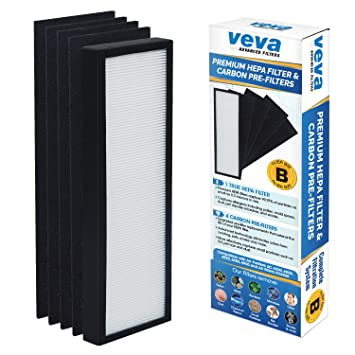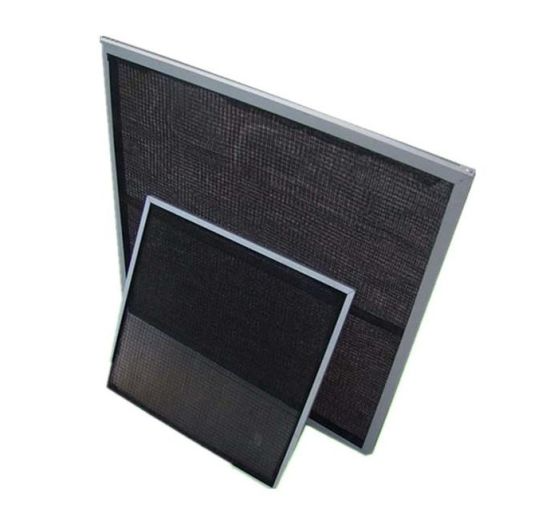Many people don’t know the purpose of a pre-filter in an air purifier. If you’re like most people, you probably don’t think about your air purifier all that much. But the fact is, your air purifier is a vital part of your home and should be maintained regularly if you want to keep your family healthy.
One of the most important aspects of air purifier maintenance is changing the filters on a regular basis. In this blog post, we will discuss one of the most important filters – the pre-filter. We’ll talk about what it does and why it’s so important!
What is a pre-filter in an air purifier?
A pre-filter is the first stage of filtration in an air purifier. Its job is to collect large dust particles, pet hair, carpet hair, and other larger particles. This helps to extend the life of the HEPA filter, which is the second stage of filtration. The pre-filter is extremely important because it helps to keep the HEPA filter from getting clogged too quickly.
As I said at the start, virtually all air purifiers on the market today include a pre-filter. This is the first stage of filtration and its goal is to capture big particles and protect and extend the life of the primary filter, which is usually a HEPA filter.
In order to avoid any misunderstanding, it’s important to know that HEPA filters can actually trap larger particles; however, because of this, they get grimy more quickly and then need to be replaced more often. The pre-filter is simpler to clean and manage which in turn saves you money since you don’t have to buy new HEPA filters as frequently.
Some pre-filters come with a HEPA and carbon filter already attached, which is typical for many 3-in-1 filters. Other filters are sold separately and have different cleaning requirements–many of which are able to be washed.
Pre-filter compared to HEPA filter
A pre-filter is far less efficient than a HEPA filter. The efficiency of the pre-filter is generally between 20% and 70%. With a filtration efficiency of 20 to 70, most pre-filters have a MERV 1-8 rating and capture particles with diameters ranging from 3 to 10 microns.
In my opinion, the pre-filter did the best job in the pet room. I have a small rabbit and two birds (budgies), and I noticed that in just a short time, many rabbit feathers and hair were caught on the filter.
I used these animals to evaluate the devices, but I believe that even dog and cat owners would benefit from the filter.
The Problem With Pre-filters
I believe that pre-filters can also be a hindrance on some devices. Mainly, I’m concerned with very weak machines that lack proper airflow and have a “thick” filter. This type of prefilter is often used in conjunction with a carbon filter.
Another potential problem is increased motor noise since if the air intake vents are blocked, the engine begins buzzing and making strange noises because there isn’t enough air.
To be clear, this is not a hypothetical situation–I performed tests on air purifiers with and without pre-filters. On the models with high airflow, there was no difference in results when I removed the pre-filter.
Although other air purifiers on the market filter air, too, none of them do it as well–and noticeably so–as our product does.
On the other hand, my recommendation would be to leave pre-filters installed for protection purposes since they protect HEPA filters from getting damaged more often than without them as well as improve certain situations’ quality of life by removing allergens like pollen or pet dander which can cause allergies.
I have seen this happen on some very cheap models, and I think it’s important to be aware of it. This is one of the reasons why I recommend avoiding air purifiers that have a pre-filter and carbon filter in one. It’s simply too easy to clog up the machine and make it less effective.
Types of pre-filters that can be found in air purifiers
Depending on the build and design, there are many types of prefilters- some of which can be washed.
washable-pre filters:

In my opinion, this form of pre-filter is the most useful. It’s the simplest to maintain and as efficient as other types of pre-filters.
These filters scarcely need to be replaced with a new one. Depending on the filter type, you can machine-wash it, hand-wash it, or simply vacuum it clean. Some air purifiers come with a pre-filter in the form of fabric that can be machine-washed, while others have metal grilles that you can wash by hand or vacuum.
I think it’s important to have a pre-filter that can be washed since it helps save money in the long run.
Carbon Pre-filters or Pre-filters Coated with Carbon:

The pre-filters surface is infused with carbon, or the pre-filter itself is made of activated carbon.
This type of pre-filter does a great job of removing smells and smoke. If you have pets, this would be the best type of pre-filter to choose since it eliminates pet odors very well.
This filter is also pretty standard and nothing special– just a carbon-coated filter. In my opinion, it is an average filter that’s used as the first stage of filtration in front of the HEPA filter.
I am unsure if the manufacturer intended to make a pre-filter with a carbon filter, or if this is simply a marketing ploy. Nevertheless, I am confident that this pre-filter works excellently and does its job in protecting the HEPA filter.
I’d want to emphasize that the pre-filter alternative is, in my opinion, the worst since it’s extremely easy to break. Furthermore, it isn’t long-lasting and must be replaced regularly.
This kind of pre-filter should not be washed because the carbon dioxide will lose its function.
Nylon Fiber Pre-filter:

This pre-filter is made of nylon fibers and is used to capture large dust particles, hair, and other larger allergens. I have mixed feelings about this pre-filter since it does a great job of removing pet hair, carpet hair, large dust particles, and other larger particles.
The carbon pre-filters are similar to this one. The distinction is that this filter is attached to another, most often a HEPA filter.
The Nylon Fiber pre-filter’s tiny openings work to trap many particles, and as a result, extend the HEPA filter’s lifespan.
I appreciate how easy it is to maintain this filter–all you have to do is vacuum any dust build-up. It’s not recommended that you wash the pre-filter, especially since it’s often glued or combined with a HEPA filter. You’ll frequently find this type of filter on devices that use 3-in-1 circular filters.
How do I clean the pre-filter, and when should this be done?
This information is usually included in the user handbook that came with the device. The filter cleaning period, on the other hand, is mostly determined by the circumstances and where the air purifier is positioned.
If you use the gadget in a house with pets, for example, the pre-filter should be cleaned more often and checked more frequently. Between 2 and 4 weeks is generally suggested by manufacturers as a time frame to clean the pre-filter.
In my experience, I need to clean the filters in a 200-square-foot room every 2-4 weeks with a smaller air purifier. Dust sometimes accumulates faster if I utilize a more powerful air purifier and it is frequently operated at full speed; therefore, I may clean the pre-filter once every two weeks.
I’ve discovered that the pre-filter rarely accumulates much dirt in rooms where pets don’t stay or spend a lot of time, like the bedroom. In these circumstances, you can probably clean the pre-filter once time n two months.
Although air purifier maintenance––specifically regarding pre-filters––is not expensive and, oftentimes, free, it will take some time as you need to use a vacuum cleaner or another method of cleaning.
Cleaning the pre-filter is not complicated.
However, if you do not know how to or are unsure about the process, it is best to read the user manual that came with your device.
If the pre-filter is a washable cloth, you may put it in the machine. If the filter is made of metal mesh with tiny holes, it may be washed in the sink. The combination of pre-filter with carbon filter and pre-filter with HEPA filter should be vacuumed or cleaned using a dry cloth.
Some FAQ
What is the use of pre-filter?
The purpose of this is to vacuum large dust bunnies, pet hair, and other pollutants so that the HEPA filter will last longer.
Can you wash any pre-filter?
Not at all. You should not wash pre-filters that are combined with a carbon or HEPA filter, for example.
Why is the pre-filter so important?
The pre-filter is extremely important because it collects pet hair, carpet hair, large dust particles, and other larger particles. This helps to extend the life of the HEPA filter.
How long do the pre-filters last?
If a pre-filter is used with a carbon or HEPA filter, it is completely replaced by other filters. However, washable filters should be changed only when significant physical damage occurs.
How often should I change my pre-filter?
The pre-filter should be changed every three to six months, or as needed. If you have a pet, you may need to change it more often. You can check your pre-filter periodically to see if it needs to be changed. If it’s clogged, it will be more difficult for air to flow through the air purifier.
Changing your pre-filter is a quick and easy way to maintain your air purifier and keep your family healthy. Be sure to change it every three to six months, or as needed. And if you have a pet, you may need to change it more often! The pre-filter is an important part of your air purifier because it helps extend the life of the HEPA filter.
What are Replaceable pre-filters?
As the name suggests, these filters need to be replaced every few months or so. The frequency of replacement depends on the usage and environmental conditions.
For example, if you live in a dusty area or have pets, you’ll probably need to replace the filter more often than someone who doesn’t.
While this might seem like a hassle, it’s actually not that bad because most pre-filters are very affordable. They’re often less expensive than HEPA filters.
Final Thoughts
Although you may have been doubtful and disregarded the pre-filter when looking for an air purifier, I hope you now realize its significance and that the pre-filter is not only meant to filter but also to extend the life of the main filter (HEPA).
I would recommend that you frequently clean and maintain the pre-filter in order to save money on having to replace the more costly HEPA filter.
If you have any questions, please feel free to leave a comment below and I’ll be happy to answer them. Thanks for reading!